|
We met for our transfer to the airport, all totally over-excited. John from Peak Transfers had kindly lent us one of their buses and Alan was our chauffeur - no peaked cap though?! Two flights and a 6-hour layover in Istanbul later, and we found ourselves in Kathmandu. We were met at the airport by staff from the marathon company welcoming “The Never-Resting Girls”. Brilliant! We were whisked to the hotel by our driver, weaving in and out of traffic and honking the horn all the way. On arrival the Hotel Shankar, previously a palace, appeared rather shabby-chic. Friendly staff and spotlessly clean, but no toilet paper flushing allowed and the rooms smelt damp. Little did we know how upmarket that would seem once we started trekking, compared to some of our other accommodation! Kathmandu is a hot, bustling, hectic, dusty, smelly sprawl of a city. Electric wires hang low in the streets, wonky brick constructions are being worked on in every spare space, road crossings where you take your life into your hands, monkeys & cows wander the streets, the rivers run dark grey, no drinking tap water, but everyone is friendly and seems relatively happy with their lot. We met up with renowned mountaineer and friend of Sofia, Russell Brice, who took us to a great place for lunch and showed us a decent shop for picking up last minute purchases for the trek. We met him later too for cocktails followed by dinner, where we were joined by ultra-running legend Lizzy Hawker. Those of us that knew who she was got a little bit star struck, but she was so friendly and we had a great night. On our second day in Kathmandu, we had a sight seeing tour of the monkey temple, high on a hill, followed by the world heritage site of beautiful old buildings. In the afternoon, we met our guide Ricky, were briefed on the trek & race, got our t-shirts and kit bags and met the rest of our trekking group. Our team of 19 consisted of us 9 (7 Neverest Girls & 2 groupies), a father and son from Belgium, a mother and daughter from Oz, a 72 year old from Oz who had run a whopping 7 marathons in her 70th year, 3 other Aussies and 2 Kiwis - a really nice bunch, but everyone else seemed pretty quiet at first. We were worried that we’d soon drive them all round the bend. We spent the rest of the evening scoffing curry and trying to squeeze our luggage down to 15kg - no mean feat for some of the girls! We rose early the next day for our flight to Lukla (2800m), which was the first hurdle of many. Lukla is known as one of the most dangerous airports in the world, due to the short runway, and all luggage had to be strictly weighed. 15kg was the total allowed including hand luggage, not a lot considering all the essential kit we needed to take with us, such as our 3kg sleeping bags. However the flight went smoothly, with the small plane almost skimming the hillside below and landing safely on the very short strip of tarmac. The views to the distant mountains were stunning and we started to appreciate just how huge the mountains actually were here, making us feel very small. This was it, there was no easy way out from here. After a couple of hours wait for the bags, our porters loaded themselves up with a ridiculous amount of luggage and we started trekking. It was good to finally get moving. We left Lukla and entered a winding, lush, green valley. We criss-crossed the river that ran through it, via metal swing-bridges, and passed through numerous villages along the way. We were told to keep to the inside of the paths whenever we met cows, donkeys and people carrying loads, to avoid falling off the edge. Sam’s trusty old hiking boots chose this time to fall apart, and one by one the soles fell off. They were patched up by the boys using shoelaces and gaffer tape. Nikki suggested selling the design to Nike, but I’m not convinced that ‘Nike Air Sams’ would fly off the shelf. We stopped for lunch, cooked in the portable kitchen by the catering crew, consisting of the soon familiar cheese sandwich, chips and salad. Our first campsite in Tok-Tok came into view a short time after. We actually lost a little altitude on that first day, but the aim was to start acclimatising and 2700m was already way higher than some of our team had ever experienced. The porters and sherpas swiftly put up our tents, which were surprisingly spacious. Afternoon tea and biscuits followed, then dinner at 7pm. Evening meals were quite basic but filling: watery garlic soup (good for altitude apparently), followed by up to three of either noodles, rice, pasta, potatoes and vegetables with curry or dahl. There was even a dessert of powdered custard made with water, or tinned fruit. So not the usual nutritional lead up to a big race, but we were certainly carb-loading! At the end of dinner we had more tea or hot chocolate and 'Ricky Time', where our guide told us the plan for the next day and answered any questions. We also had our first experience of the camping toilets: a small pit dug into the ground and covered by a tent. There were other toilets available en route in the lodges, but generally they were pretty grim. If you were lucky there were squat toilets into water, otherwise there were open holes onto straw, swarming with flies and very smelly. The higher up we went, the worse they got. I think most people slept well that first night, although I believe those suffering from the altitude did not for most of the trip. As became the morning routine, we rose at 6.30am to tea in our tents and bowls of hot water for washing ourselves, packed our bags for the porters, went to breakfast for 7.30am and left the site at 8.30am. Breakfast was porridge, eggs or pancakes and toast, with lots of tea. In fact we were required to drink 4 litres of water per day in an attempt to stay hydrated, one of the main issues that can lead to altitude sickness. Not ideal when you were trying to avoid the horrible toilets. Day 2 took us to Namche Bazaar (3400m) , an amphitheatre-shaped bustling town with shops, cafes and a couple of bars, so a good place to hang out for a few days. We had a stunning campsite right at the top of the town, but blimey, did we feel that first walk up there through the steep streets. After two hot, sweaty days of walking we were able to have a shower, do some washing, buy coffee & cake, go shopping (for fab Sherpa-branded kit and essential new hiking shoes) and hook up to wifi to let our loved ones know that we were OK. We had a great catering tent here, which was used whenever there wasn’t a lodge nearby for mealtimes. Day 3 was our first ‘Rest Day’, but we were still up and out of our tents by 8.30. In fact most of us were awake way before that and rose to stunning views of huge, snowy mountains and the sound of cuckoos, crows, cow bells and barking dogs. We soon learnt that a rest day meant slightly less trekking than on the other days, but it did not mean resting! The idea is to keep moving and circulating oxygen around your body, which aids the acclimatisation. We were also banned from daytime napping for the same reason. Our race would eventually end in Namche so from here our trek route generally followed the race route, and we trekked out to see a significant junction that we would pass. We got our first glimpses of Everest, Amadablam and several other large, well-known peaks, which was very exciting. After yet more shopping en route (!), we ran back to Namche, our first experience of running at high altitude. The path was relatively flat, but you could still feel the effect of the altitude. Namche marked the final point of relative civilisation and the thought of leaving that the next day was exciting yet concerning. Many of our team were already suffering from symptoms of mild altitude sickness, some had started taking medication and yet we still had another 2000m of altitude gain to make before the start of the race. Then there was the thought of the race itself. We had waited so long for this trip to come - could we all really make it to the start line, let alone the finish?
Helen & Sam x
2 Comments
21/3/2016 02:14:40 am
interesting experience, I think you must have workouted very much to have a strongth muscle…
Reply
Leave a Reply. |
Archives
October 2015
Categories |

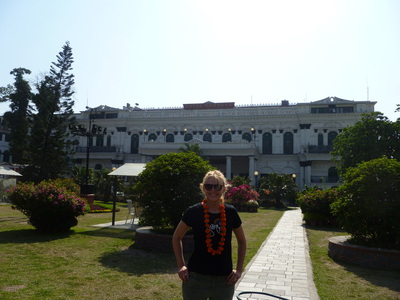


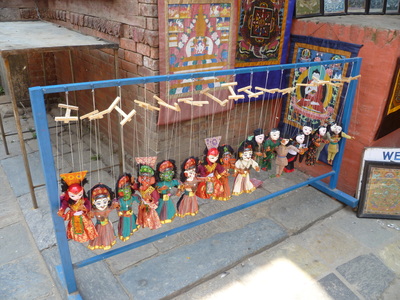
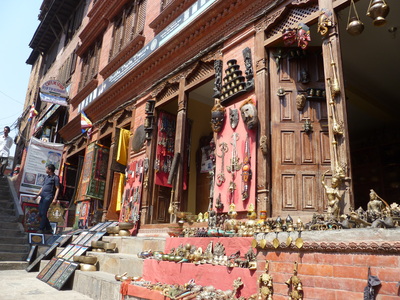




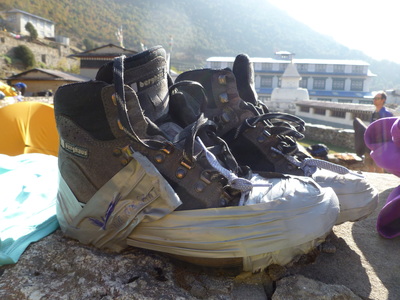



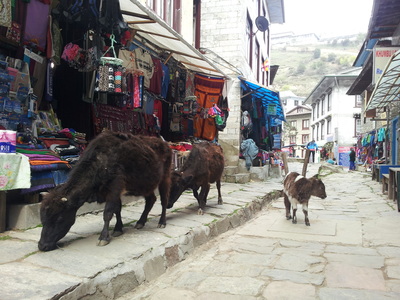
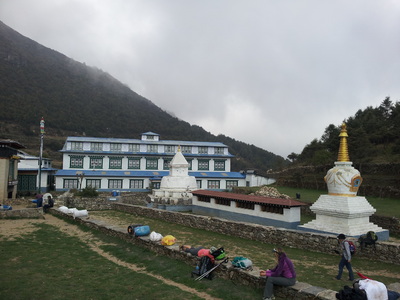
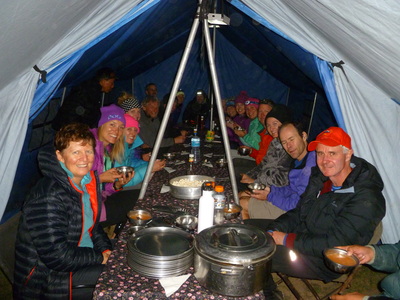
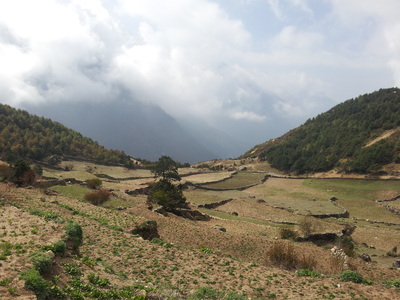
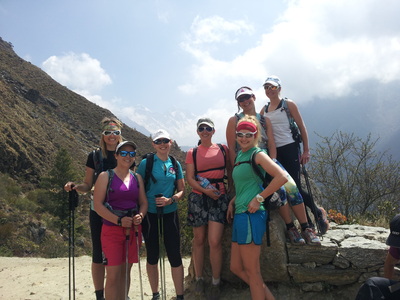
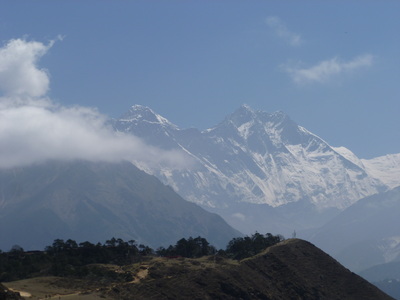

 RSS Feed
RSS Feed
